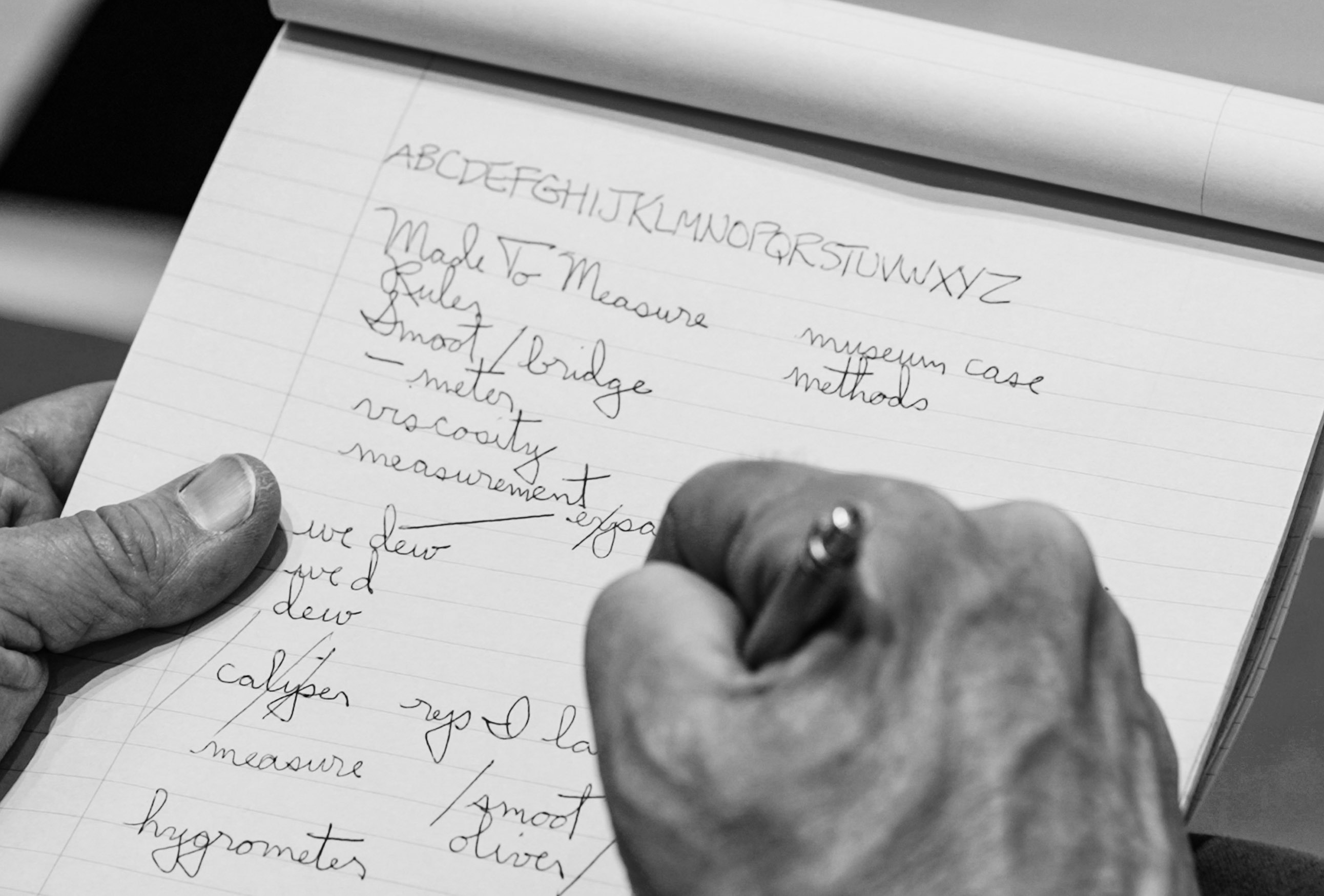Writing in two directions
How I fell in love with palindromes.

When I was a teenager in South Jersey and getting a driving lesson from my dad, he casually mentioned that I should look in the rearview mirror every now and then to see what was going on behind me. To borrow an expression from my Italian grandmother, I remained with my mouth open—that is, I was astonished. How was it possible, I wondered, to look in front of me and behind me at the same time? In that instant, I probably knew that I would very soon become a passionate nondriver, but I couldn’t have imagined that I would find my calling doing the very thing I thought impossible: looking forward and backward simultaneously.
I was working in a bookstore in Philadelphia (the first of many bookstore jobs) when I had my initial introduction to palindrome writing. I came across a book called An Almanac of Words at Play, and it had a section devoted to these constructions, which read the same in both directions. Something about the idea of reversibility resonated with me and struck me as truly elegant. Looking back, I see that the palindromes that sparked my interest weren’t particularly good, but that’s just as well. At the start, I certainly would have been intimidated by real two-way excellence.
I don’t know if it’s just forgetfulness or some kind of defense mechanism on my part, but I can’t remember any of my early efforts. I’m sure they were terrible, as most palindromes are. So many are about nothing, paying no attention to grammar or logic—just words strung together, with no real merit. But I do recall being on a commuter train in Philadelphia, seeing a sign that told commuters to hold on to their receipts, and recognizing that the word “receipt” contained the word “piece” going the other way. An encouraging moment.
At that time, there was no evidence that anything serious or genuinely literary could be accomplished with palindrome writing. Still, out of some combination of stubbornness and eccentricity, and with no real example to follow, I kept working at it. Eventually (decades later), something happened, and I reached a point where reversibility became so natural to me that I began to think of it as my first language. After what had seemed like an unusually long apprenticeship, I had achieved such proficiency in two directions that I felt as if I could compose a palindrome on just about any subject.
Most people are familiar with only two kinds of palindromes: bad and worse. So it’s no surprise that when I tell people I hope to establish palindrome writing as a literary form, or that I sometimes get paid for my two-way creations, or that I’m eager to find an agent and a publisher for a collection of my palindromes I’m calling I Am the One Making Reversible Art, or that palindromes can be factual and humorous and emotional, I’m met with stares of incredulity and sighs of pity. That’s okay, because I know that I’ll have the last laugh. Well, maybe.
I’m always happy to uncover opportunities to raise the profile of palindrome writing and to demonstrate its versatility. In the last dozen years or so, I have collaborated on a dance with the dance company Monkeyhouse, had two gallery shows in New York City, talked about my writing with students at every grade level, published a palindrome in the anthology The Best American Nonrequired Reading, and contributed reversible text to a piece of music by composer Oliver Caplan. Also, I’m the subject of an upcoming documentary film by filmmaker Michael Rossi.
But the biggest boon to my career has been landing here at MIT. I started working at the Institute in January of 2022, in the MIT Press Bookstore. While I was delighted to find a bookselling job in this most civilized environment, I never expected that I would get such an enthusiastic reaction to my two-way writing (even being profiled in a video and an article from the News Office). To date, I have composed at least 80 palindromes for MIT people and departments, including 30 reversible meditations on exhibits, objects, and spaces at the MIT Museum and a succinct celebration of the Institute’s industrious mascot—mit.edu dude: Tim!
More palindromes by Duncan can be found HERE
I’m sometimes asked how I go about constructing a palindrome. It’s difficult to describe something that often happens instantly—I write a good many palindromes without ever putting pen to paper—but I would say that I begin in the middle and try to evaluate the reversible potential of all pertinent vocabulary. My goals are always the same: to serve the subject, keep that middle point from standing out too obviously, and produce something that sounds as much like normal writing or speech as possible. If I can manage to do that without showing off too much, then I feel that I’ve succeeded.

Getting back to those MIT Museum palindromes, here’s one that will give you an idea of how I work. After the museum unveiled its exhibit “Made to Measure,”which contains a smoot bar, it occurred to me that I should write something about Oliver Smoot and the famous measuring event that took place on the Massachusetts Avenue Bridge. In the completed palindrome, there are a few things that are not badly done: a nicely concealed, ironic middle (“tall? a frat star?”), the anticipated eponym (“name’s unit”), and an acknowledgment of all the lying down and standing up that was involved in the process (the words “fall” and “up”). This one was written very quickly. Every word is doing exactly what it’s supposed to do, there’s nothing extraneous, and I must confess that I’m not displeased with it. Take a look.
So, put in use: Man—tall? a frat star?—fall at name’s unit. Up, O.S.!
Now I fear that I’m talking too much in one direction about writing in two directions, and that my audience is starting to experience “reversibility fatigue.” So it’s probably time for me to thank you for your patience and interest and be on my way. But I hope I’ve managed to give some impression of the great joy I take in my craft, and the gratitude I feel toward the MIT community for responding so positively to it. Perhaps I’ve even inspired you to try your hand at palindrome writing. To start, just reverse every single word you encounter (in a book, in a conversation, in a sign on a commuter train). Please don’t worry that it’s too challenging an undertaking, or that it may be a very long time before you compose a palindrome that makes any sense. After all, it’s as easy as learning to drive: in two directions at the same time.
Barry Duncan is a bookseller at the MIT Press Bookstore and a master palindromist. The longest palindrome he has written is 2,583 characters—more than 800 words—long.
Keep Reading
Most Popular
Large language models can do jaw-dropping things. But nobody knows exactly why.
And that's a problem. Figuring it out is one of the biggest scientific puzzles of our time and a crucial step towards controlling more powerful future models.
How scientists traced a mysterious covid case back to six toilets
When wastewater surveillance turns into a hunt for a single infected individual, the ethics get tricky.
The problem with plug-in hybrids? Their drivers.
Plug-in hybrids are often sold as a transition to EVs, but new data from Europe shows we’re still underestimating the emissions they produce.
Stay connected
Get the latest updates from
MIT Technology Review
Discover special offers, top stories, upcoming events, and more.